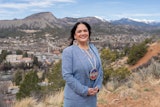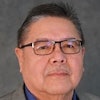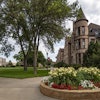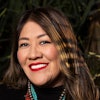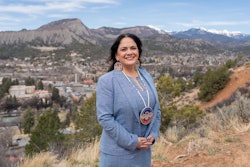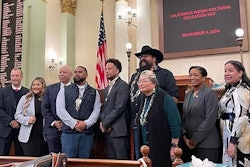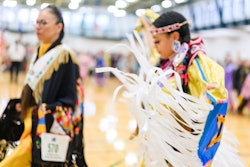LAPWAI – From a single high-tech classroom, American Indian students like 43-year-old Shelly Higheagle are taking college classes for the first time.
It doesn’t resemble your typical college campus from the outside. The distance learning center for Northwest Indian College doesn’t boast a prominent sign. It sits amongst modular buildings that house the tribe’s Head Start center, where a much younger student population goes to class each day.
But inside, Higheagle sits with a tape recorder in the front row, taking notes during instructor Phill Allen’s Native American studies class.
“I wish I would have got to do this a long time ago,” said Higheagle, who started taking classes part-time about a month ago with her 21-year-old daughter Nicole.
Six people attend this day’s class from Lapwai, and about 20 are enrolled and tuning in via television conference from five other distance-learning campuses around the Northwest. The Bellingham, Wash., school has a main campus on the Lummi Indian Reservation.
Classes at Lapwai began with 17 students in 2001, as a place for tribal employees to advance their education, Allen said. This quarter Allen said the Lapwai and Kamiah centers cite an enrollment of about 40, double the numbers of last spring.
The center’s one classroom also serves as office, computer lab and admissions center. Another classroom inside the Wa A Yas Community Center in Kamiah serves the same purpose.
“Our goal is to get people to graduate from this college and get their bachelor’s and master’s and Ph.D., and come back,” said Allen, who taught at other colleges before he began teaching at the center.
To achieve that, Allen said instructors hope to keep students in that comfort zone but also be rigorous with the curriculum and eventually send students to a four-year school. And Northwest Indian College is beginning to offer a four-year program of its own.
The school is in its first year offering a bachelor’s degree in Native American environmental science, with four-year programs in other fields to follow. Lapwai could soon evolve into a four-year school, Allen said. There also are plans to begin teaching the Nez Perce language.
A map of the Nez Perce territory pinned on the classroom wall can be seen behind Allen as he teaches. Allen is a member of the Nez Perce Tribe, and admits being nervous teaching the people he grew up with.
But it can be easier, Allen said, when tribal members are learning about issues like tribal sovereignty from those who have grown up with it. Northwest Indian College officials like Justin Guillory, dean of the school’s extended campuses, say curriculums have been developed by American Indians and for American Indians, to honor tribal culture and history in each of the distinct tribal communities.
“What we’re finding in researching Indian education, many of our Native students don’t want to leave their communities and they don’t want to leave their tribal communities,” Guillory said of students making their first venture into higher education. “So we basically have taken college to them.”
Guillory was the first site director for the Lapwai distance learning center when it opened in 2001. A Nez Perce tribal descendant, Guillory said the school needs to balance education with each tribe’s distinct history and culture.
“Ultimately we want to help educate tribal members in these tribal communities to get a degree and acquire the skills to build a tribal work force for these specific tribes,” Guillory said.
Pauline Bisbee, 24, is in her second year at the school, with a goal to transfer to Lewis-Clark State College upon completion. Out of high school for five years, Bisbee said the program was easier because she has two children and works for the tribe’s water resources program.
“It was kind of intimidating trying to go to college,” she said, but the program allowed her to take online and independent classes with a hope of transferring to a four-year school.
Many of the students are nontraditional who work full- or part-time. Allen and other instructors like Rochelle Troyano in Kamiah teach students with an average age in their early 30s, who have been away from school and maybe didn’t leave in the traditional way.
In Kamiah, Troyano teaches chemistry from a classroom in the Wa A Yas Community Center. She finds it’s important to engage the students via the video system, especially in math and science classes.
“Even at the other end I go up and do problems. It’s a lot of work, I must say, but I also say it’s a lot of fun,” Troyano said. “I love the challenge of it.”
Lapwai site director Bill Picard said classes at the school can jump-start students to one of the area’s other area schools, and eventually back to the tribe. They just need to get the word out.
“We’re trying to publicize it more, get it out more,” Picard said of the school.
Allen’s biggest recruitment tool is word of mouth. And gesturing around the room, he said he can find the next group of educators to take his place one day.
“Hopefully this is a new crop of teachers in the next 15 years.”
© Copyright 2005 by DiverseEducation.com
